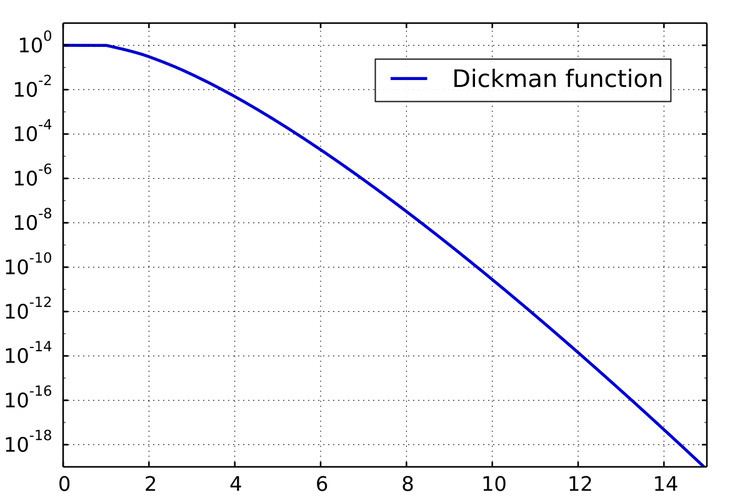 | ||
In analytic number theory, the Dickman function or Dickman–de Bruijn function ρ is a special function used to estimate the proportion of smooth numbers up to a given bound. It was first studied by actuary Karl Dickman, who defined it in his only mathematical publication, and later studied by the Dutch mathematician Nicolaas Govert de Bruijn.
Contents
Definition
The Dickman-de Bruijn function
with initial conditions
where
Ramaswami later gave a rigorous proof that for fixed a,
in big O notation.
Applications
The main purpose of the Dickman–de Bruijn function is to estimate the frequency of smooth numbers at a given size. This can be used to optimize various number-theoretical algorithms, and can be useful of its own right.
It can be shown using
which is related to the estimate
The Golomb–Dickman constant has an alternate definition in terms of the Dickman–de Bruijn function.
Estimation
A first approximation might be
where Ei is the exponential integral and ξ is the positive root of
A simple upper bound is
Computation
For each interval [n − 1, n] with n an integer, there is an analytic function
with Li2 the dilogarithm. Other
An alternate method is computing lower and upper bounds with the trapezoidal rule; a mesh of progressively finer sizes allows for arbitrary accuracy. For high precision calculations (hundreds of digits), a recursive series expansion about the midpoints of the intervals is superior.
Extension
Friedlander defines a two-dimensional analog
